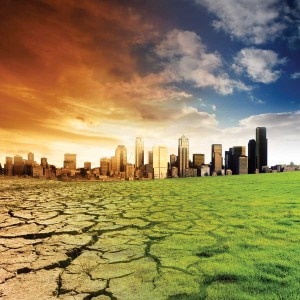Excessive heat to rock South Asia by 2030

KATHMANDU, Nepal-Extreme heat, flooding, and food shortages will rock South Asia and Africa by 2030, according to a new report made publish by World Bank.
‘Turn down the Heat: Climate Extremes, Regional Impact and the Case for Resilience,’ a new report by WB forecasted the dark pictures of environment in South Asia and African nations. The report unveiled that a global temperature rise of 2 degree Celsius will have a vast range of effect on environment. It has also alarmed that significant parts of coastal cities in South Asia may be engulfed.
“If the world warms by two degrees Celsius – warming which may be climbed up 20 to 30 years – that will cause widespread food shortages, unprecedented heat waves, and more intense cyclones,” said World Bank President Jim Yong Kim.
Kim pointed out that such change could shatter the hopes of individual and families, who have had a little ‘contribution’ to raise earth temperature.
The report further read the burning of carbon-based fuels has increased the amount of carbon dioxide (CO2) in the atmosphere by 40 percent. CO2 and water vapor in the atmosphere are crucial in retaining some of the sun’s heat energy; without them, the earth’s atmosphere would be more like the moon’s: 100 degrees Celsius in the daytime and -150 degrees at night.
Sad findings
One of the bleak findings in the new study is the enormous impact a two-degree rise will have on the urban poor, said Rachel Kyte, according to the vice president for sustainable development at the World Bank.
‘Urbanisation is increasing rapidly, especially in the developing world, with many more people living in slums and informal settlements,’ IPS quoted Kyte’s statement from London. The report painted a bleak picture for many cities.
As climate change disrupts rainfall patterns and generates more extreme weather in the coming decades, leading to poor crop yields, rural populations will flee to cities. Escalating numbers of urban poor will suffer, with temperatures magnified by the “heat island effect” of the constructed urban environments.
Safe drinking water will also be harder to find, especially after floods, contributing to greater water-borne diseases such as cholera and diarrhoea.
Coastal regions like Bangladesh and India’s two largest coastal cities, Kolkata and Mumbai, will face extreme river floods, more intense tropical cyclones, rising sea levels and very high temperatures. “Huge numbers of urban poor will be exposed in many coastal cities,” Kyte said.
“We face a huge challenge over the next 20 years to…redesign our cities to protect them from climate change,” Kyte predicted, even as cities already face a huge infrastructure investment gap.

